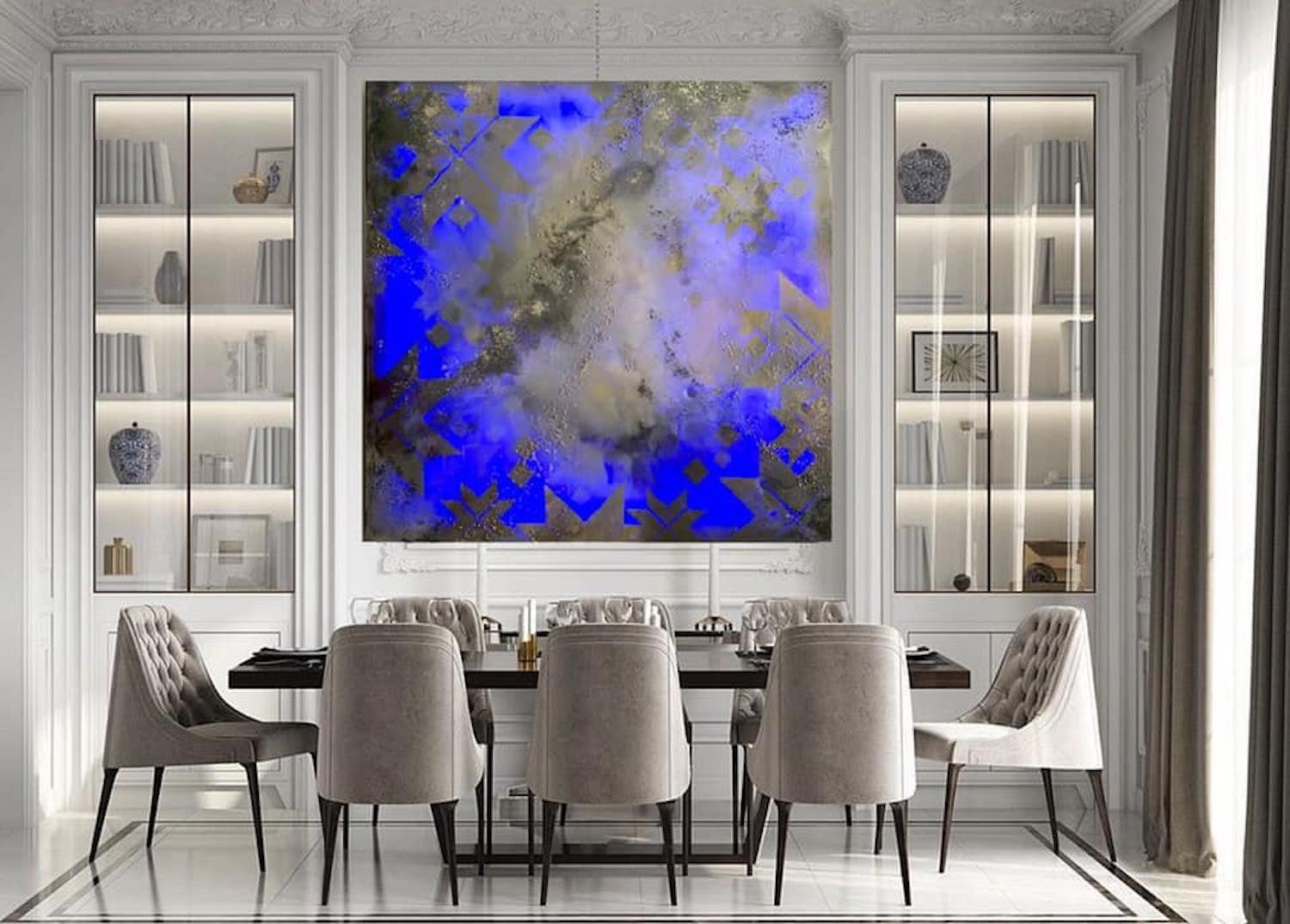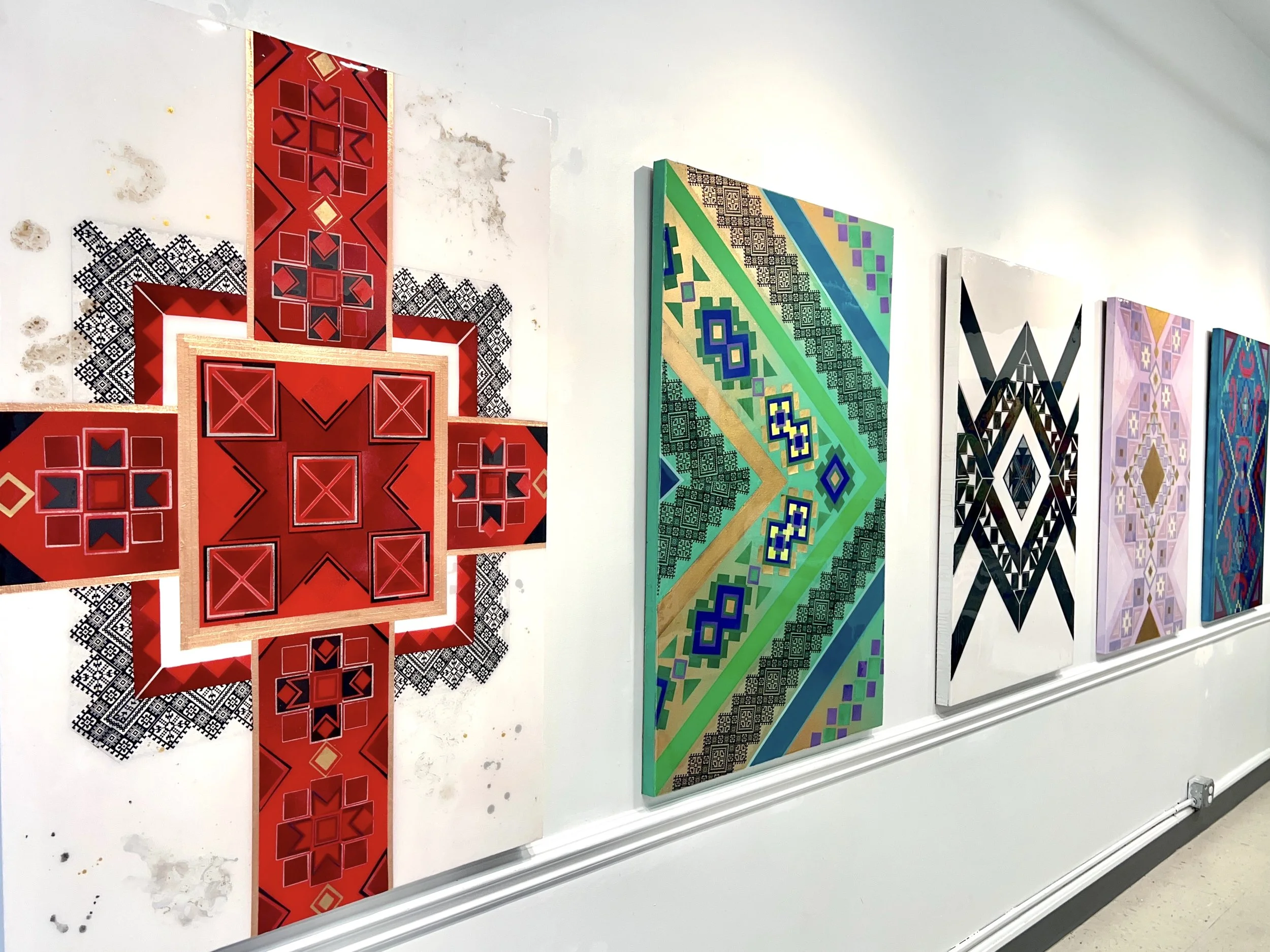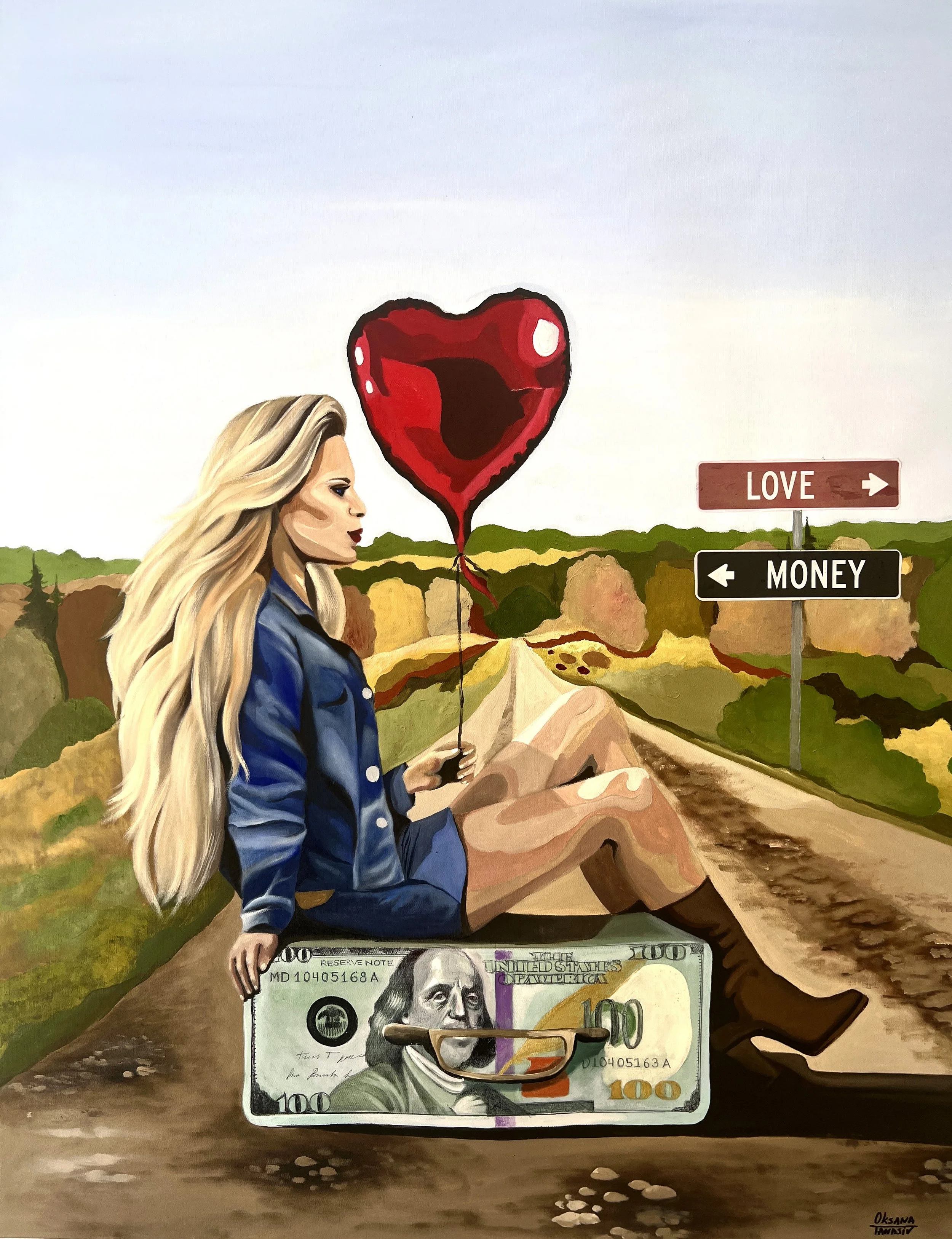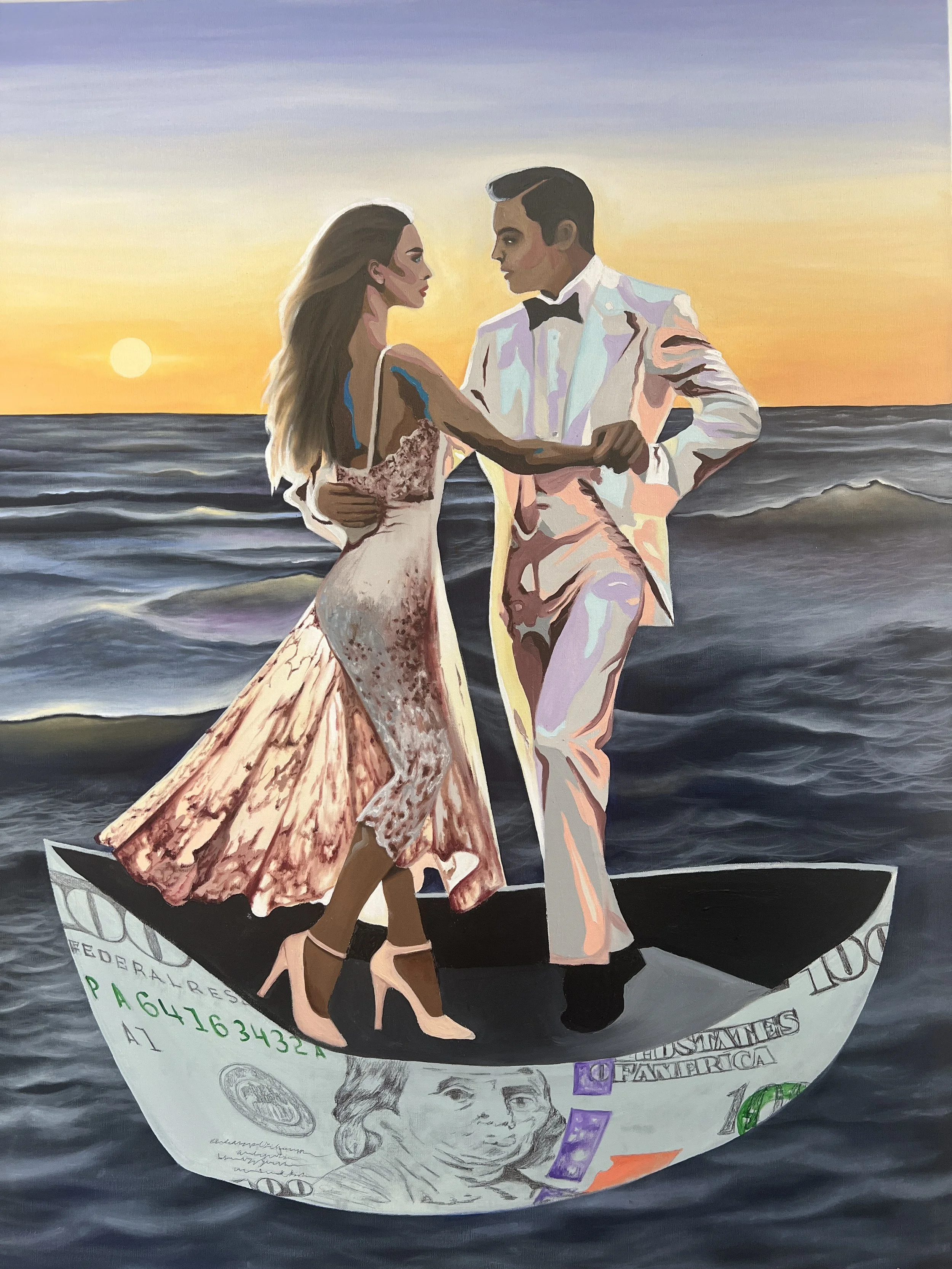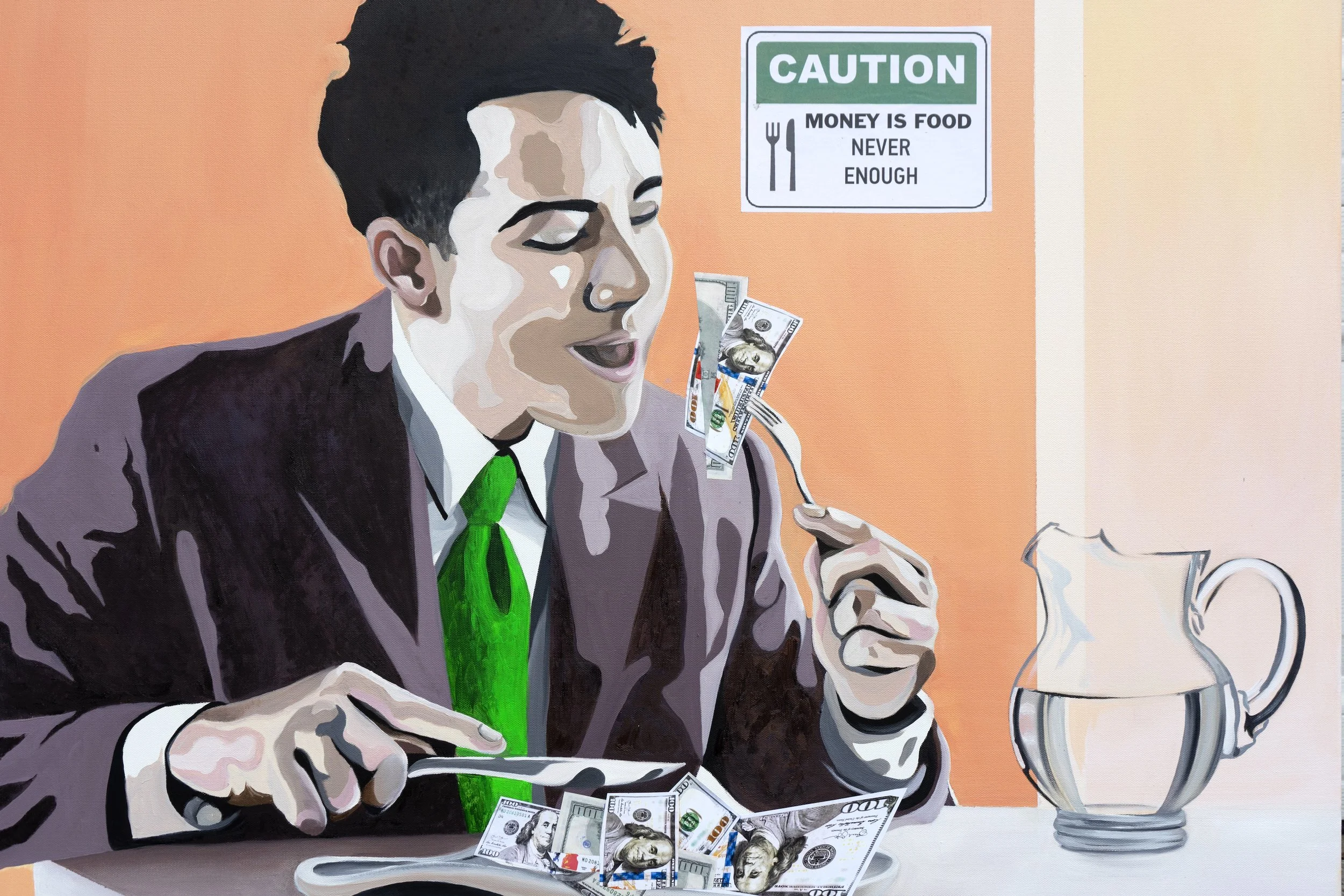Interview with Oksana Tanasiv
Oksana Tanasiv is American, Ukrainian-born contemporary artist, who currently lives and works in Connecticut, USA.
Her art works belong to the museum collections in the USA, Canada and Europe, and to the private collections worldwide.
Oksana collaborates with the galleries in Connecticut, NYC, and Miami.
She is an exhibitor of the International Art Fairs as Volta NYC, Art Hamptons, Art Los Angeles, Palm Beach, Miami, Aqua Miami.
As an author of 500+ artworks she experiments with the multiple techniques and media, she developed new conceptions and in art, highlighting through her art the most provocative social processes of the modern world, evoking viewers’ thinking, analysis, and interpretation.
On March 2024, Oksana Tanasiv received an
International Order of Queen Anne, "Honor of the Fatherland” by
Ukrainian Research Center for Effective Governance together with the Council of Experts of the International Program "Leaders of the XXI Century”for high professional achievements, virtue and acts of high valor and honor aimed at the benefit of the People and the State.
Wikipedia: https://en.wikipedia.org/wiki/Oksana_Tanasiv
Website: https://oksanatanasiv.com/
Instagram: https://www.instagram.com/oksi_fineart/
Facebook: https://www.facebook.com/oksana.tanasiv
Could you share the story of how you first became interested in art and what motivated you to pursue it as a career? Were there any pivotal moments or influences in your early life, especially during your time in Ukraine, that ignited your passion for art and set you on the path to becoming the internationally recognized artist you are today?
I have been passionate about art since my early childhood, when I was very young. Watching my father, who inherited his creative abilities from my grandfather, I was fascinated by the way he painted and how living images and paintings appeared from under his hand. These moments had an incredible impact on me, giving rise to a deep love of art and a desire to become an artist. This was followed by many years of practice and creativity as I practiced art and improved my skills. Many years passed since then, until 2004, when I decided to pursue art professionally after my immigration to the United States.
It was moving to the United States permanently that prompted me to choose art as a career. The art market in New York is very well developed, and the chance for self-realization is very high, despite the fierce competition.
It was the desire to realize myself as an artist in the art capital of the world that attracted me the most.
Your Dollar Art series uses currency as a critical element to explore themes of corruption, political manipulation, and war. Can you elaborate on the process of integrating real dollar bills into your art? How do you ensure that the message remains potent without overshadowing the aesthetic value of the work?
The idea of using dollar bills as one of the materials for painting arose back in 2011, when I started creating this series. The events of the then political situation in Ukraine, caused by corruption and financial manipulations, made me use banknotes for a more sophisticated, deeper transmission of an intellectual message, where a certain message is encoded in the dollar image of certain objects, which the viewer has to decipher. Thus, I began to see the images of the environment from a different perspective, where certain objects were visualized in my imagination as dollar bills, thus encoding certain messages, such as an umbrella for financial security, glasses for greed, dollar clothes for signs of corruption, and other messages.
In this case, aesthetics does not play such a special role as the conciseness of the message, the simplicity of the lines, because the main focus is on the intellectual aspect.
Although in my latest series 23/24 I departed from this principle a little bit and endowed the painting with a richer range of colors and details.
I moved away from acute political topics a bit and started creating lighter, less provocative paintings, instead raising the theme of love, self-esteem, financial grace, happiness
In your statement, you mentioned that your paintings are your personal way of fighting against war, corruption, and injustice. How has your approach to creating art evolved in response to the ongoing conflict in Ukraine and its impact on your family and heritage?
In 2016, before the American elections, the wave of Russian propaganda against Ukraine as an independent state with its millennia-old culture and national identity reached an immeasurably large scale, distorting its history, manipulating the minds of millions, and it spread to the informational space of Europe and America. I suspect that even then, Russia was preparing an information platform to justify its full-scale invasion of Ukraine, i.e., the war. That's when some of the images in the Dollar Art series became prophetic. And I continued to use the dollar collage as a tool to expose dirty methods - corruption, offshore schemes, political and economic crimes, and human immoral actions. In addition, in 2016 I started the Code U series (Ukraine). This is a series of geometric abstract compositions based on ancient patterns of Ukrainian embroidery. As you know, the history of Ukrainian embroidery spans several centuries, and it encodes symbols, geometric patterns that have a powerful sacred meaning and were used for centuries as energy protection in the everyday life of Ukrainians. Thus, through highlighting the antiquity of Ukrainian culture, I started a "cultural" battle against Russian lies and misinformation about the “non-existence of Ukraine”.
Katarina Zavodszka described your work as a labor of love that challenges our understanding of the world through social commentary. How do you balance the personal and universal aspects of your art, ensuring it resonates with a broad audience while staying true to your personal convictions and experiences?
I believe that the most important characteristic of art is its truthfulness and authenticity, it is not subject to any universal standards. Art is a mirror reflection of the social processes that take place in the era in which the artist creates, usually framed in the artist's artistic style, passed through his "lenses" of vision. An artist is a conductor of historical information and events for future generations. And in this case, he must honestly fulfill his duty as a creator to capture and freeze the events of the present for future generations. I use very provocative methods in my Dollar Art series, sometimes even sarcastic ones, but this method helps to draw attention to a particular social situation. I analyze and observe people’s actions. As for personal aspects, I have my own life principles and rules, but I abstract from them to highlight the behavior of people influenced by money and show how people change or behave under the influence of greed. That is, I highlight certain psychological processes or social problems caused by human factors, often negative ones. This is how I see my role as an artist in conveying the processes of the reality we live in.
Looking at the broader scope of your work and its reception, especially now with the full-scale war in Ukraine highlighting the prophetic nature of your Dollar Art series, what impact do you hope your art will have on viewers? Specifically, in what ways do you aim for your work to contribute to the discourse on war, corruption, and the role of art in societal change?
Any military conflict has various deep social, historical, military causes. In order to resolve the conflict, these reasons must be known. In the case of Russia's invasion of Ukraine, Russia pursues the goal of controlling Ukrainian territory, which is economically valuable for Russia, and for this, the Russian government uses disinformation and propaganda to maintain corrupt money laundering schemes, and guided by false information methods to destroy Ukrainians. and deny their national identity and history. In this way, I wanted to convey this information to the art observers - greed is the root cause of war. Thus, this collective reveals the cause of the war, fighting against false Kremlin narratives. And Code Ukraine, a series of antique patterns, is proof that Ukrainian culture is unique, and Ukraine has very deep and antic history, so the mission of Code U to deliver a historical valuable message about Ukraine.
With a diverse body of work that spans realistic, surrealistic, and pop-art styles, and experiments with various techniques and media, how do you navigate the creative process when deciding which direction to take for a new piece or series? Is there a particular experience or influence that typically guides your choice of subject, style, or technique?
In my early work, I created in a realistic style, paying attention to details. Later, when I started working on the Dollar Paintings, my style slightly changed, and didn’t worry too much about the details, and my style became a little more laconic, as I wanted to focus on the message. Of course, the use of dollar bills as a material here played the role of the main media and the carrier of the message. The whole series is built on the image of the dollar here. For the series Code Ukraine, Light at the End of the Tunnel, which I have been working on for the last few years, I use the technique of LED light technologies. The main message of this series, which I started creating during the global pandemic, is that despite the dark troubled times, there is always "light at the end of the tunnel". That's why now, when Ukraine is going through difficult war times, surviving under Russian bombs, this message is no less relevant. So LED (light) as a material helped me in conveying this message to the audience. I cannot say exactly what guides me in the choice of style or materials, these processes take place in accordance with the meaningful philosophical load I place in a certain series and in the process of a certain associative thinking.
Given your extensive exhibition history, including international art fairs and galleries, what do you consider the most challenging aspect of preparing for these high-profile events? How do these experiences shape your development as an artist and the evolution of your work over time, especially in the context of presenting your conceptual Dollar Art collection that addresses social, political, and economic issues?
The most difficult aspect of preparing for international exhibitions is the moment of selecting products and paintings. In the conditions of fierce competition faced by every participant of such a show, it is extremely important to analyze the needs of the contemporary art market and art collectors. This experience teaches me to analyze the art market in depth and communicate with art collectors, to make effective sales and create a new customer base for my collections. Against the background of the events taking place in Ukraine, the attention of the world community is focused on these events, so the relevance of the political series Dollar Art is no less relevant, reflecting the current events of the modern world.
Reflecting on your diverse educational background—from pedagogy and psychology to business and general studies—and your significant support for humanitarian causes, such as the Evromaydan Auction, how have these experiences influenced your approach to art and its role in society? Specifically, how do your studies and your active participation in supporting Ukraine through art reflect in your work, both thematically and in the messages you wish to convey?
I think that my education gave me a very broad outlook and knowledge in different disciplines, such as psychology, philosophy, history, ethnography, political science, etc That's probably why my art is so multifaceted, because I want to convey my knowledge to the viewer through art. As you can see, in my Dollar series I express my understanding of psychology and philosophy, the interest and studies of political science helps here too. In creating the Code U series, I rely on my knowledge of history and ethnography of Ukraine. I am not a standard artist, but I have never sought to obey any standards or stereotypical vision of who an artist is and what he or she should create.
As for my participation in charity auctions in support of Ukraine, this is my civic position, and I think that any person who has a conscious position can do something to help people who need help. You don’t need to be an artist, or particular other profession. You just need to be a human for this. I think that your readers or art collectors will be able to better track the influence of my knowledge, education and activities in the field of charity on my work, because as observers, all these points are much more obvious to them. And I will continue to work towards active coverage of the most acute moments of the modern world, providing material for analysis, reflection, and self-improvement through my art.






